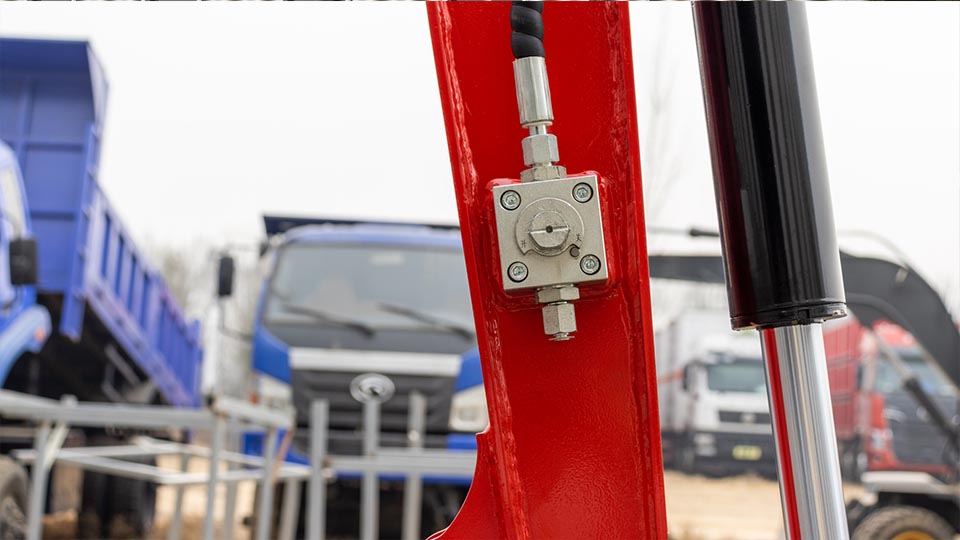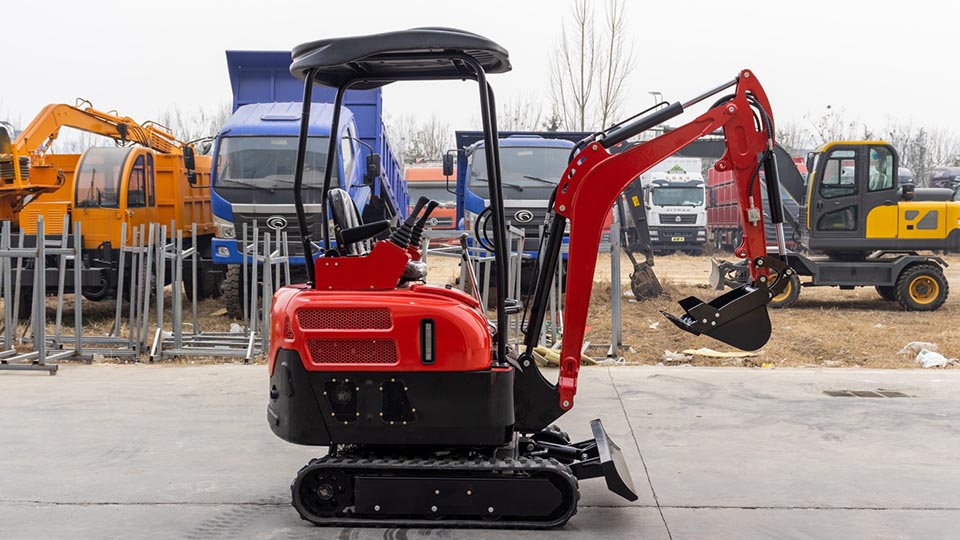Excavators are the workhorses of the construction, demolition, and landscaping industries. Their versatility, power, and ability to handle a wide range of tasks—from digging foundations and trenches to moving large quantities of earth and demolishing structures—make them an indispensable asset on almost any job site. However, the high initial cost of purchasing an excavator, along with the ongoing expenses of maintenance, storage, and depreciation, makes renting a more practical and cost-effective solution for many businesses and individuals.
But what determines the price you pay for that rental? The cost of renting an excavator is not a single, fixed number. It's a complex figure influenced by a multitude of factors, all of which a savvy renter must understand to make an informed decision and secure the best possible deal. This article will provide a detailed technical breakdown of the key factors affecting excavator rental rates, offering insights for both project managers and individual contractors.
1. Equipment Size, Type, and Technology
The most fundamental factor in determining a rental rate is the machine itself. Excavators come in a vast range of sizes and configurations, each designed for specific applications, and their rental price directly correlates to their size, power, and technological sophistication.
Mini and Compact Excavators: These machines, typically weighing less than 6 tons, are the most affordable to rent. Their compact size and agility make them ideal for small-scale projects, landscaping, and jobs in confined spaces where a larger machine would be impractical. Their lower price reflects their reduced digging depth, lifting capacity, and overall power.

Standard and Mid-Sized Excavators: Ranging from 6 to 45 tons, these are the most common excavators on construction sites. They offer a balance of power and maneuverability, capable of handling a wide array of tasks from digging large foundations to utility work and general earthmoving. As the size and weight of the machine increase, so does the rental rate, reflecting the higher purchase price, maintenance costs, and fuel consumption.
Large and Heavy-Duty Excavators: Machines weighing over 45 tons are built for major earthmoving projects, mining, large-scale demolition, and quarry work. They are the most expensive to rent due to their immense power, specialized nature, and significant operating costs.
Specialized Excavator Types: Beyond the standard tracked excavators, there are specialized types that come with their own pricing structures. Wheeled excavators, for example, are more expensive than tracked models but offer greater mobility on paved surfaces. Long-reach excavators, suction excavators, and draglines are also specialized machines that command premium rates due to their unique capabilities.
Technology: The age and technological features of an excavator also play a crucial role. Newer models often come equipped with advanced features like GPS-based grading systems, telematics for real-time monitoring of fuel consumption and performance, and improved operator cabins. While these machines may have a higher upfront rental cost, their enhanced efficiency, safety features, and fuel economy can often lead to a lower total project cost.
2. Rental Duration and Pricing Structure
The length of the rental period is a significant determinant of the total cost and the daily rate. Rental companies incentivize longer-term rentals with discounted rates.
Hourly Rates: Some companies offer hourly rates for very short, specific tasks, but this is less common and usually carries the highest per-hour cost.
Daily Rates: This is the standard for short-term projects (typically 1 to 4 days). Daily rates are the highest on a per-day basis.
Weekly Rates: A weekly rental agreement (often for a period of 5 to 7 days) provides a substantial discount over the daily rate. This is the most common option for projects that span several days to a couple of weeks.
Monthly Rates: For long-term projects lasting a month or more, monthly rental agreements offer the most significant discounts, sometimes reducing the effective daily rate by 50% or more compared to a standard daily rental. This arrangement is highly beneficial for both the renter and the rental company, as it guarantees equipment utilization and reduces administrative turnover costs.

Savvy renters will carefully plan their project timeline to choose the most cost-effective rental duration. Extending a daily rental for a few extra days can often be more expensive than simply opting for a weekly rate from the beginning.
3. Additional Costs and Fees
The advertised base rental rate is often just the starting point. Several other expenses can significantly inflate the final cost.
Delivery and Pickup Fees: The cost to transport the excavator to and from your job site is almost always a separate charge. These fees are based on the distance from the rental yard and the size of the machine (larger excavators require specialized transport). For projects in remote areas, these costs can be substantial.
Attachments: The standard bucket that comes with the excavator may not be sufficient for your project. Specialized attachments like hydraulic hammers, augers, compactors, and grapples are available for an extra daily or weekly fee. While they add to the cost, the right attachment can dramatically increase productivity and reduce project time, potentially saving money in the long run
Insurance and Damage Waivers: Rental companies require that you have insurance to cover any damage to the equipment. You can either use your own insurance policy (often requiring a certificate of insurance) or purchase a damage waiver from the rental company. The cost of a damage waiver is typically a percentage of the total rental cost.
Fuel and Operator Costs: The rental price almost never includes fuel. You are responsible for refueling the machine, and many companies have policies that require the excavator to be returned with a full tank, or they will charge a hefty fee for refueling it themselves. If you need a skilled operator to run the excavator, their wages are an additional cost that you must factor into your budget. Some rental companies offer packages that include an operator, but this will be at a premium price.
Environmental and Administrative Fees: You may encounter small, additional charges for things like environmental protection fees, maintenance fees, and taxes, which are often not included in the initial quote.
4. Market and Geographical Factors
The rental price is also heavily influenced by external market forces and geographical location.
Supply and Demand: This is one of the most critical factors. In regions with a high concentration of construction projects or during peak construction seasons (typically spring and summer in many climates), the demand for excavators is high. This scarcity drives up prices and can make it difficult to secure the exact machine you need. Conversely, during off-seasons like late fall and winter, demand is lower, and rental companies may be more willing to offer discounts to keep their fleet utilized.
Local Market Conditions: Rental rates can vary significantly from one city or state to another. Factors like local competition among rental companies, the cost of labor and real estate, and regional business taxes all play a role in setting prices.
Brand and Age: The brand of the excavator can also impact its rental price. High-end brands known for reliability, such as Caterpillar, Komatsu, and John Deere, may command a premium. Older machines, while potentially cheaper, might come with a higher risk of mechanical issues and downtime, which can be costly in the long run.
5. Rental Provider and Negotiation
The final piece of the puzzle is the rental company itself and your relationship with them.
Provider Type: National rental companies (like United Rentals or Sunbelt Rentals) often have extensive fleets, consistent pricing, and widespread availability. Local or regional rental companies may offer more personalized service and could be more willing to negotiate, especially for repeat customers.
Negotiation: For longer-term rentals or multi-machine projects, negotiation is a powerful tool. You can often secure a better rate by bundling multiple equipment rentals from the same provider or by leveraging a history of being a reliable, on-time renter. Being a well-informed customer who has done their research and understands the market rates gives you a significant advantage in negotiation.
Conclusion
The cost of renting an excavator is a multifaceted equation with no single, easy answer. It’s a sum of the machine's technical specifications, the duration of the rental, a host of additional fees, and the prevailing market conditions. By carefully analyzing these factors—from choosing the right size and type of excavator for your project to strategically planning your rental duration and being prepared to negotiate—you can effectively manage your costs and ensure your project stays on budget. The key is to look beyond the initial quote and consider the total cost of ownership for the duration of your project, including all the hidden fees and the potential value of advanced technology, to make the most informed decision.
Post time:Sep-25-2020
